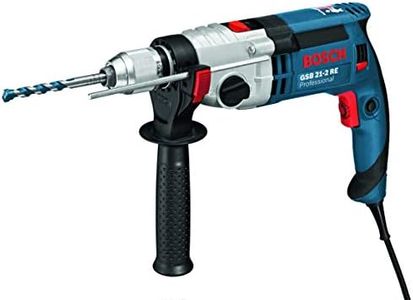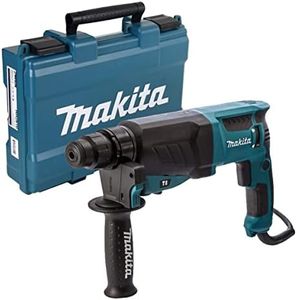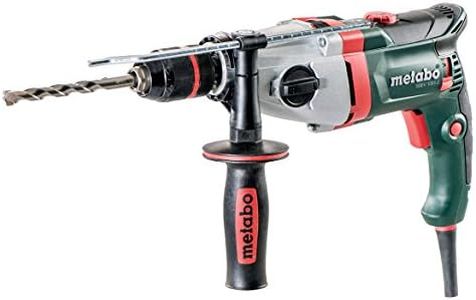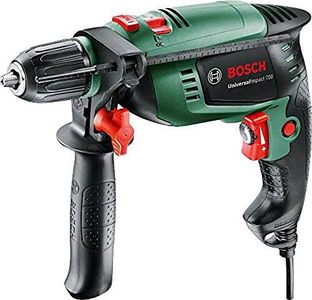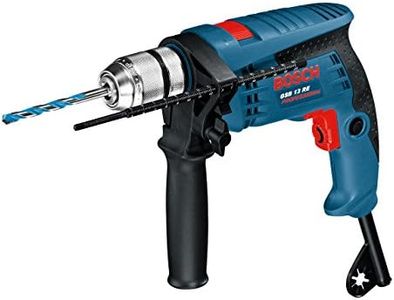We Use CookiesWe use cookies to enhance the security, performance,
functionality and for analytical and promotional activities. By continuing to browse this site you
are agreeing to our privacy policy
10 Best Corded Drills
From leading brands and best sellers available on the web.Buying Guide for the Best Corded Drills
When choosing a corded drill, it's important to consider what types of projects you'll be using it for and how frequently you’ll need it. Corded drills are known for their consistent power since they plug directly into an electrical outlet, making them a popular choice for extensive or heavy-duty tasks. To find the best drill for you, focus on the main specifications, as these determine how the tool will perform in different scenarios.Power Rating (Amperage)The power rating, often expressed in amps, tells you how much electrical current the drill can handle, which translates into its overall strength. A higher amperage means more power, which is useful for drilling into tough materials or for extended use. If you plan to use your drill for light household tasks, lower amperage (around 4 to 6 amps) is usually sufficient. For more demanding jobs, such as drilling into masonry or dense woods, consider models with higher amperage (7 amps and above). Picking the right power depends on the materials you’ll work with most often—a less powerful drill is lighter and easier to handle, while a more powerful one can tackle tougher jobs.
Chuck SizeThe chuck is the part of the drill that holds the bit in place, and its size determines the maximum diameter of bit you can use. The most common sizes are 3/8 inch and 1/2 inch. A 3/8-inch chuck is suitable for most standard household tasks and lighter projects. If you expect to use larger drill bits or need more versatility for heavy-duty jobs, a 1/2-inch chuck is preferable. Think about the range of bits you want to use and what type of work you plan to do most often.
Speed Settings (RPM)Corded drills offer different rotations per minute (RPM), which influences how quickly and efficiently the drill bit spins. Some drills have a single speed, while others offer variable speeds or multiple preset speed settings. Lower speeds provide more control for drilling into metal or driving screws, while higher speeds are better for drilling into wood. If you need versatility for different materials and tasks, choose a drill with variable or dual speed options, so you can match the speed to the activity.
Reverse FunctionThe reverse function lets you change the direction the drill spins, which is useful for removing screws or stuck drill bits. This feature is especially handy if you plan to use your drill for driving screws as well as drilling holes. If you anticipate only using it for straight drilling, reverse is less critical, but for general use and convenience, having this feature is highly recommended.
Ergonomics and WeightHow the drill feels in your hand—its grip, balance, and overall weight—affects comfort during use, especially if you’ll be working for long periods. Lighter drills are easier to handle overhead or in tight spaces, but might have less power. Heavier models may provide more stability for tough jobs. If possible, try holding different drills to see which feels best for the kind of work you'll do most often.
Cord LengthCord length determines how much reach you have from an electrical outlet when using your drill. Shorter cords are less likely to tangle and are easier to store, but may require you to use an extension cord. Longer cords offer more freedom of movement but can get in the way. Consider where you’ll be working most frequently, and whether you’ll need extra reach or will mostly be near outlets.


